You can always use more task box ideas in your classroom if you have independent work systems. And task boxes that are simple to make, don’t take much money, and engage the students? That’s a win-win-win, right? So in today’s post, I thought I would focus on some math task box ideas that will include examples for younger and older students. I’ve got some functional tasks and some academic tasks to share, so there should be something for everyone. And don’t worry- if your students just need to match, I’ve got those. If your students are working on higher level math–got you covered too!
This post includes affiliate links. See my disclosure policy for more information about affiliate links. I make a small amount but only recommend books and materials I truly use myself.
Math Task Box #1 : Pocket Math File Folder
You will find a video tutorial to create this file folder game in an earlier post, but it pays to share it again because it’s just so easy. Use some library pockets. Don’t have library pockets? No problem, grab these from Amazon [affiliate link] and you’ll be ready to go. Just write the problem on the pocket and the answer on the index card. Or write the answer on the pocket and the problem on the index card. You pick!

Just make sure your cards and your pockets match up and you don’t have stray cards that don’t match up. That would be a really confusing outcome for a student that violates what makes a good independent work task.
#2 : Number Matching or Sorting
You can create this math task box really easily with whatever kinds of numbers you have lying around in your classroom. I happened to have these button things and they didn’t really have all the numbers. But that’s ok, because I didn’t have a container with enough spots to sort all the numbers 1-10 anyway. You don’t need to sort 1-10. Pick a few numbers.
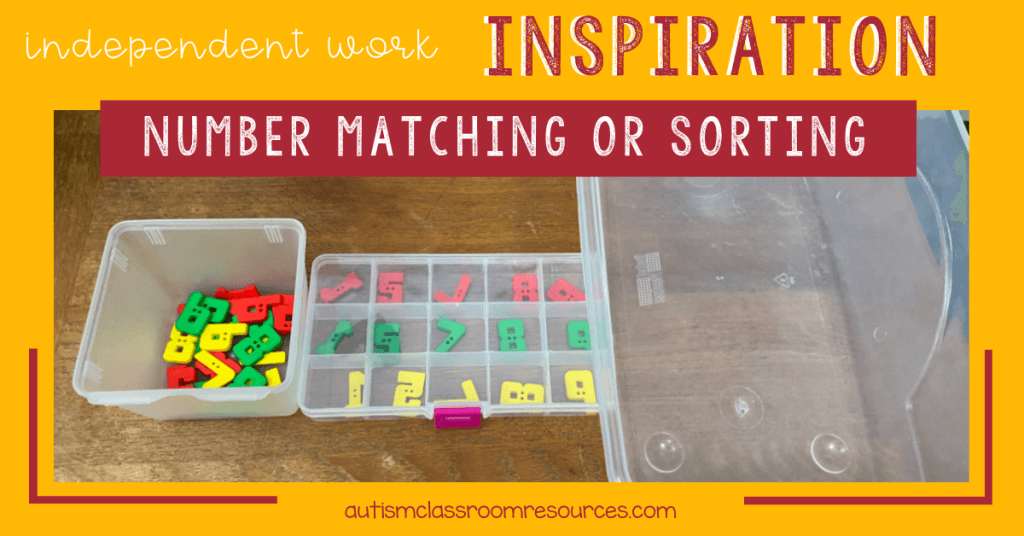
You can set up the task so that students are sorting by NOT including a number in the slot for students to match. That way they have to go through the numbers and put each individual number in its own slot.
If you include a sample number, then you are setting up a matching task. It may be that the student is learning to sort in direct instruction but can match independently in independent work.
#3 Grocery Store Functional Math Skills: More Than-Less Than
This is probably one of my favorites because it combines academic skills with functional materials. You can work on more than and less than with a grocery flyer. Grab the grocery flyer from your mailbox or your local store. Cut out items with prices above or below a set amount. I chose $5. Use your library pockets (see they come in really handy, right?) to make 1 envelope for less than and one for more than. Students then have to sort the grocery items by whether the price is more than your price or less than your price.

This math task box is great because it’s essentially free. You could laminate the pieces and make it durable and reusable. Or you can not laminate it and replace the grocery flyer materials regularly. Seems like a good way to recycle them to me. Plus the students won’t memorize the answers. I’m all for task box ideas that are free and easy.
Task Box #4: Clothespin Math
Of courses, a list of task box ideas would never be complete without something that uses clothespins, right? Math especially lends itself well to clothespins. This task box has students doing addition or any type of math fact with index cards and clothes pins. You write the problem on the index card and the answer on the clothespin. Then the clothespin can be attached to the card as the answer. This way students get fine motor activity at the same time that they are practicing their math.
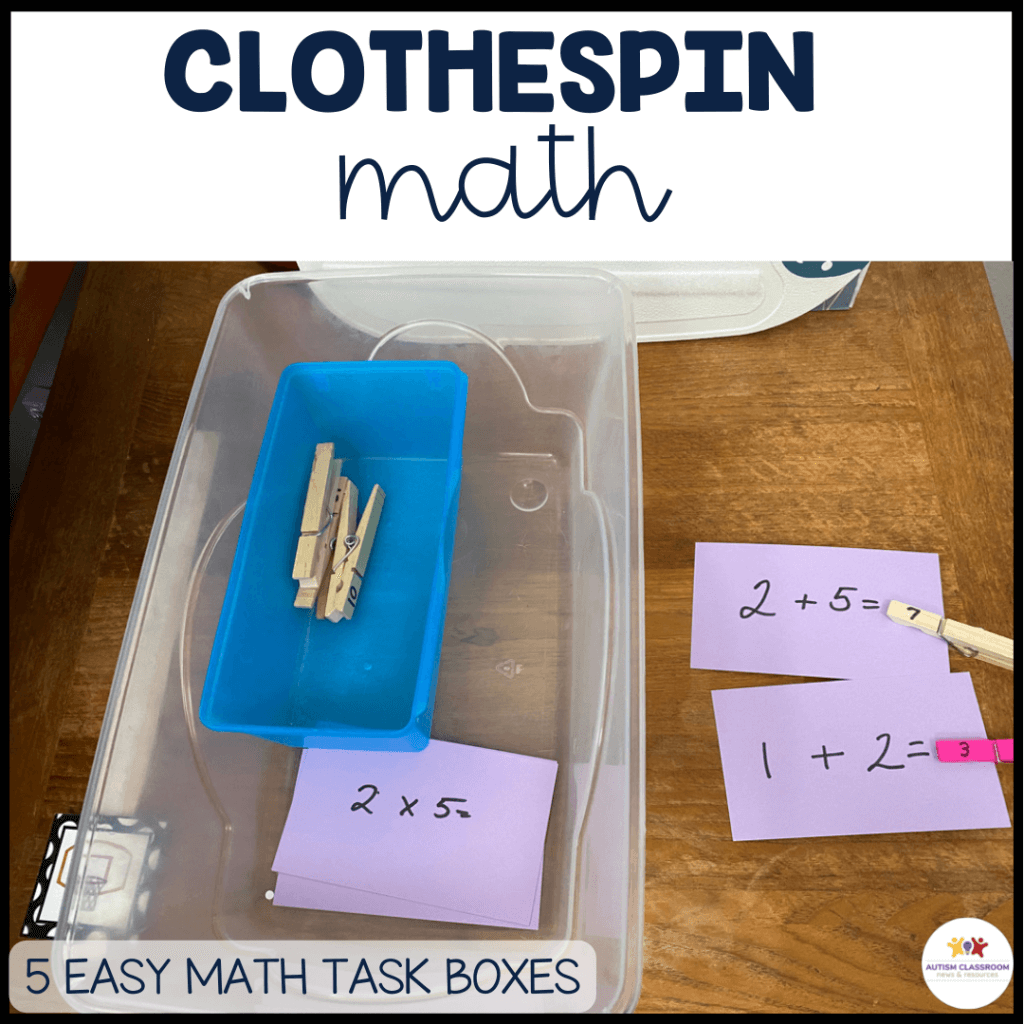
Math Task Box #5: Muffin Tin Counting
This is another throw back that you can grab a tutorial for task box ideas with this muffin tin counting activity. I use magnet tape to keep the numbers in the bottom of the muffin tins. Then students count mini erasers into the muffin tin sections to match the numbers. I like using the magnets because it allows me to change the numbers around. It also allows me to use the muffin tins for other things, like other sorting or matching activities if I need them.
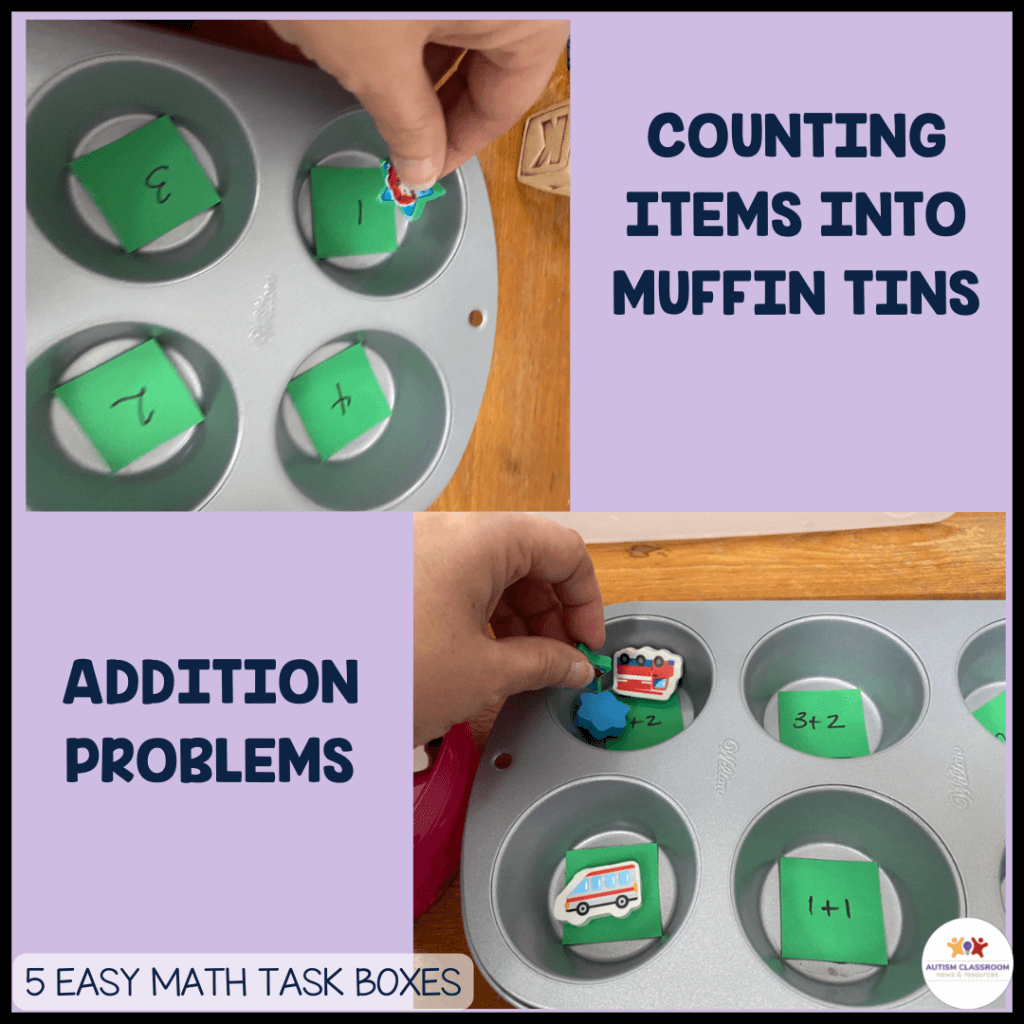
You can also set this up with counting or with math problems. So you could have just numbers on the bottom of the tins so students count. But you can also put addition or subtraction problems in the tins. Then students have to solve and put the right number for the solution in the tins. Again, it gives you lots of flexibility so being able to switch things out can be helpful.
So there are lots of choices for cheap and easy math task boxes that will keep your students engaged and practicing their math concepts. If you are looking for more ideas and ready-made math tools, check out the independent work tasks in my TpT store here. And if you are just getting started with independent work, grab the tools below for a jumpstart.
More Workbasket Wednesday Resources

Looking for more ideas on special education work boxes or work systems and how they can be used? Check out the links in Resources below for more posts. And, I wrote about a book about them!
Buy From Amazon (including Kindle) (see my disclosure policy for more information about affiliate links).
GET ALL THE VISUALS AND ORGANIZATIONAL TOOLS YOU NEED to start independent work in your classroom.
These kits include an e-book with directions on setting up independent work systems and using the materials included, data sheets for tracking progress, visuals for the special education work boxes and schedules, what’s next visuals, and mastery sheets to keep track of which students have mastered which task.

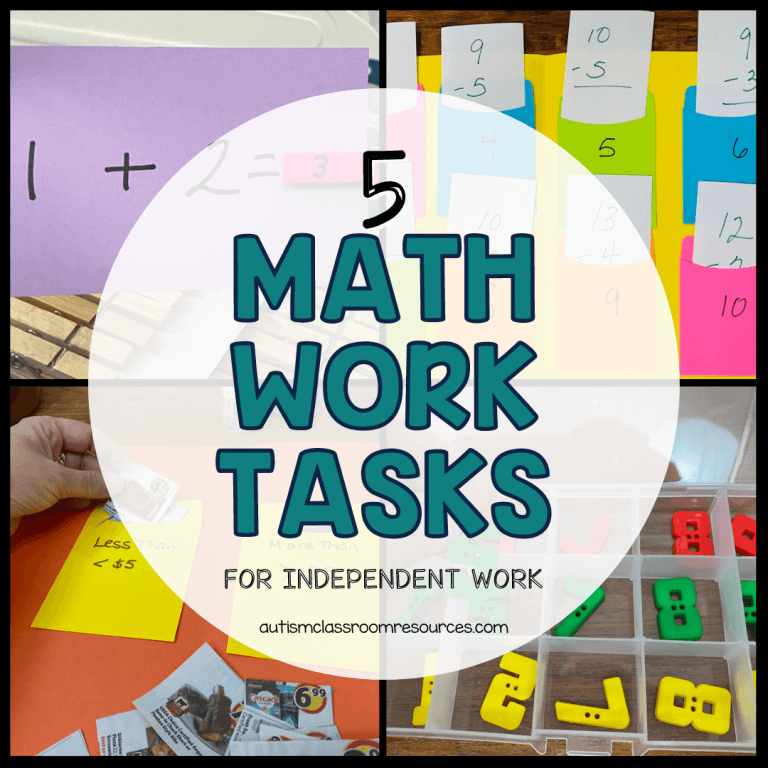
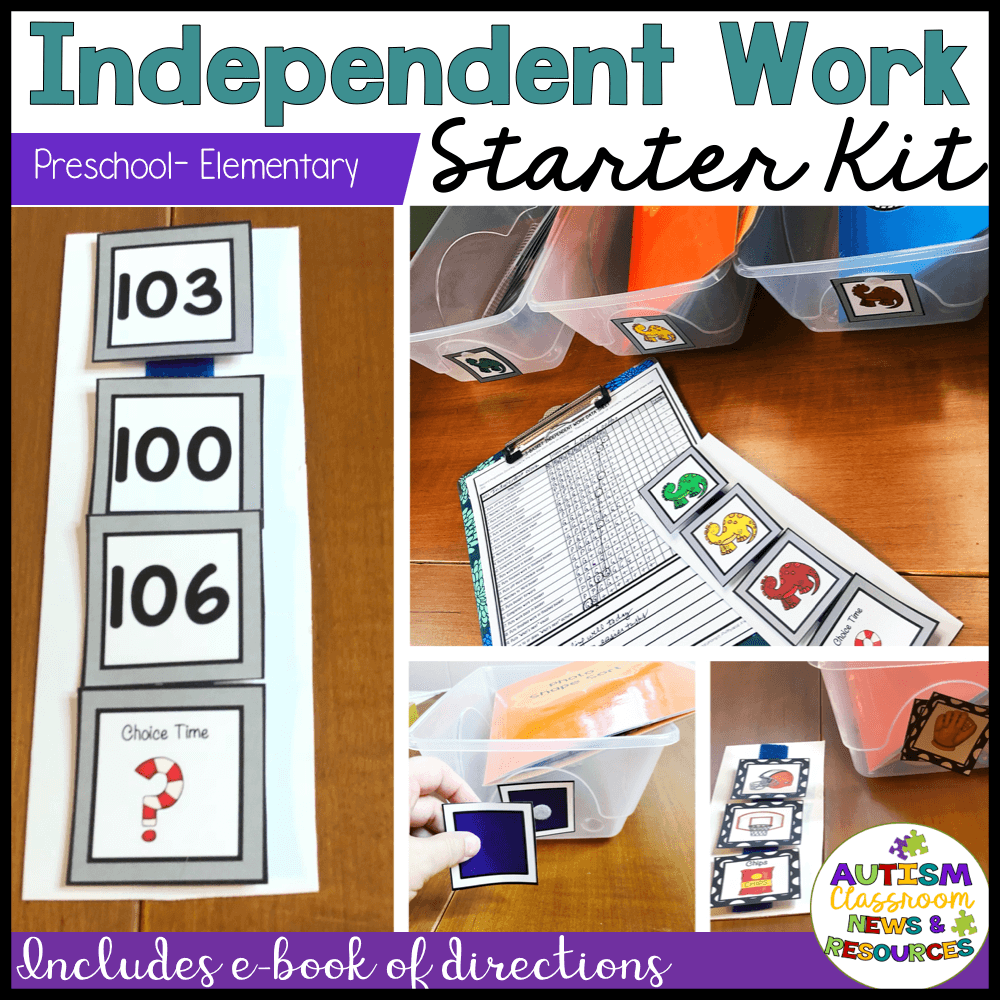
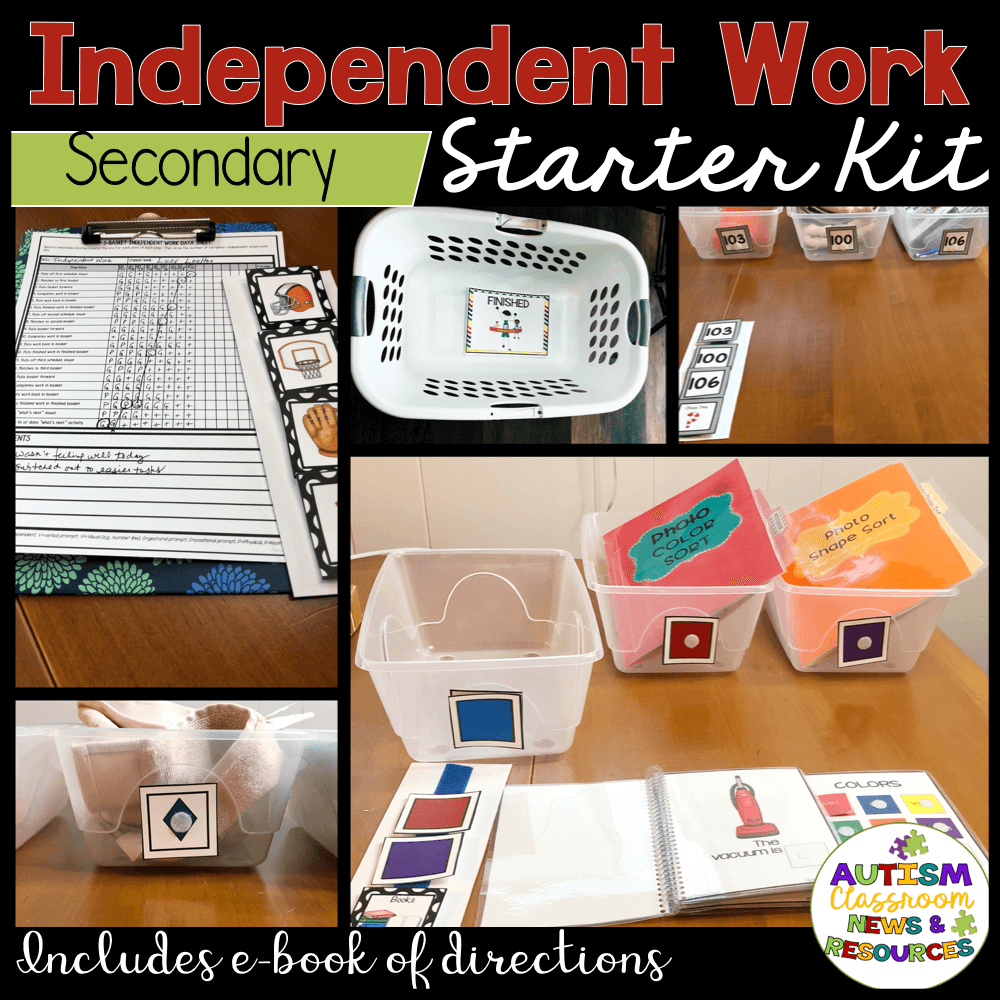

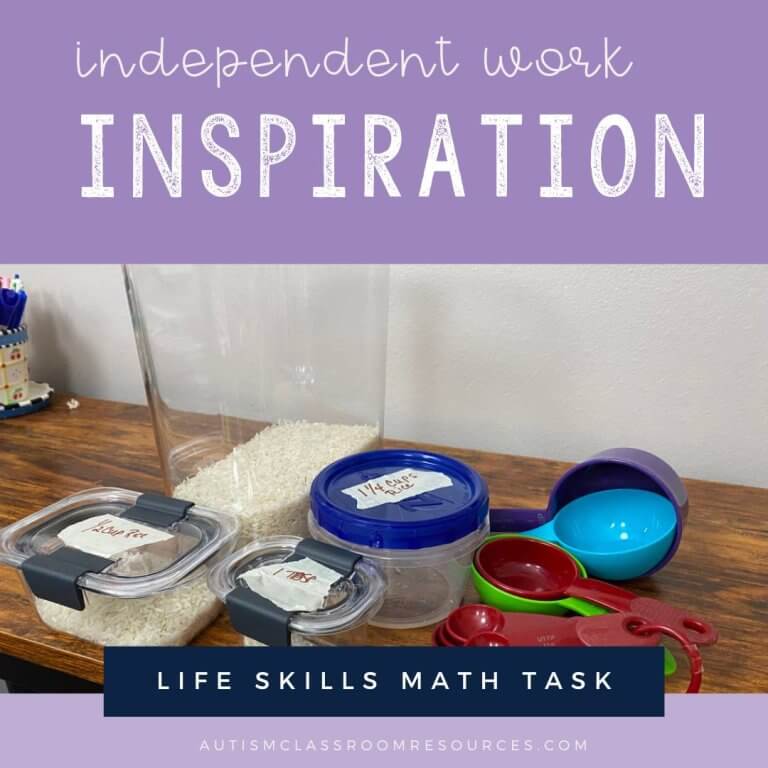
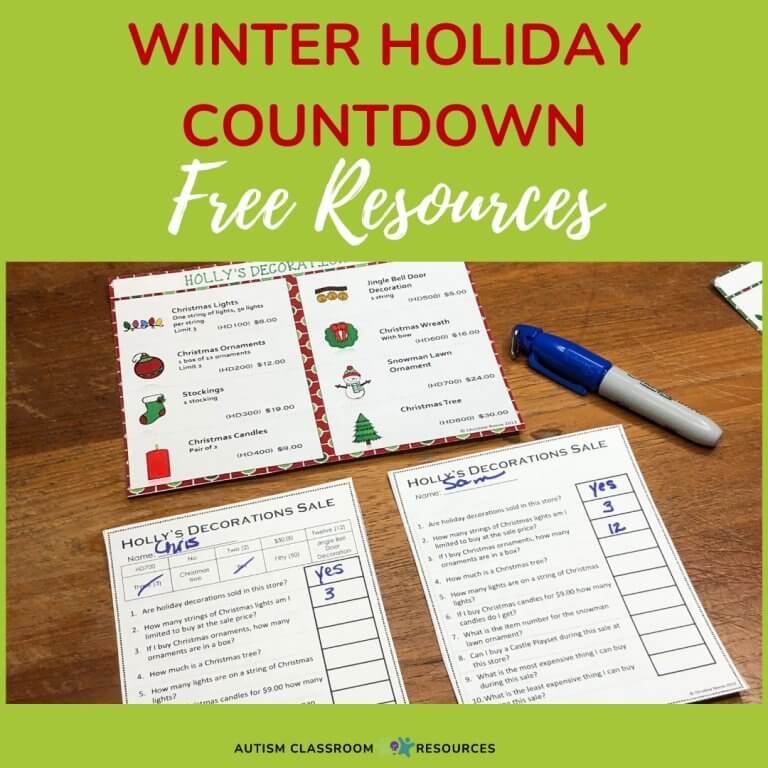
![Independent Work-3 Ways It can Become Your Best Classroom Management Tool [A sorting task in a shoebox to sort nouns from verbs on popsicle sticks into plastic cups]](https://autismclassroomresources.com/wp-content/uploads/2023/06/BLOG-22208-3-Ways-Task-Boxes-and-IW-Help-Classroom-Management-2-768x644.jpg)
